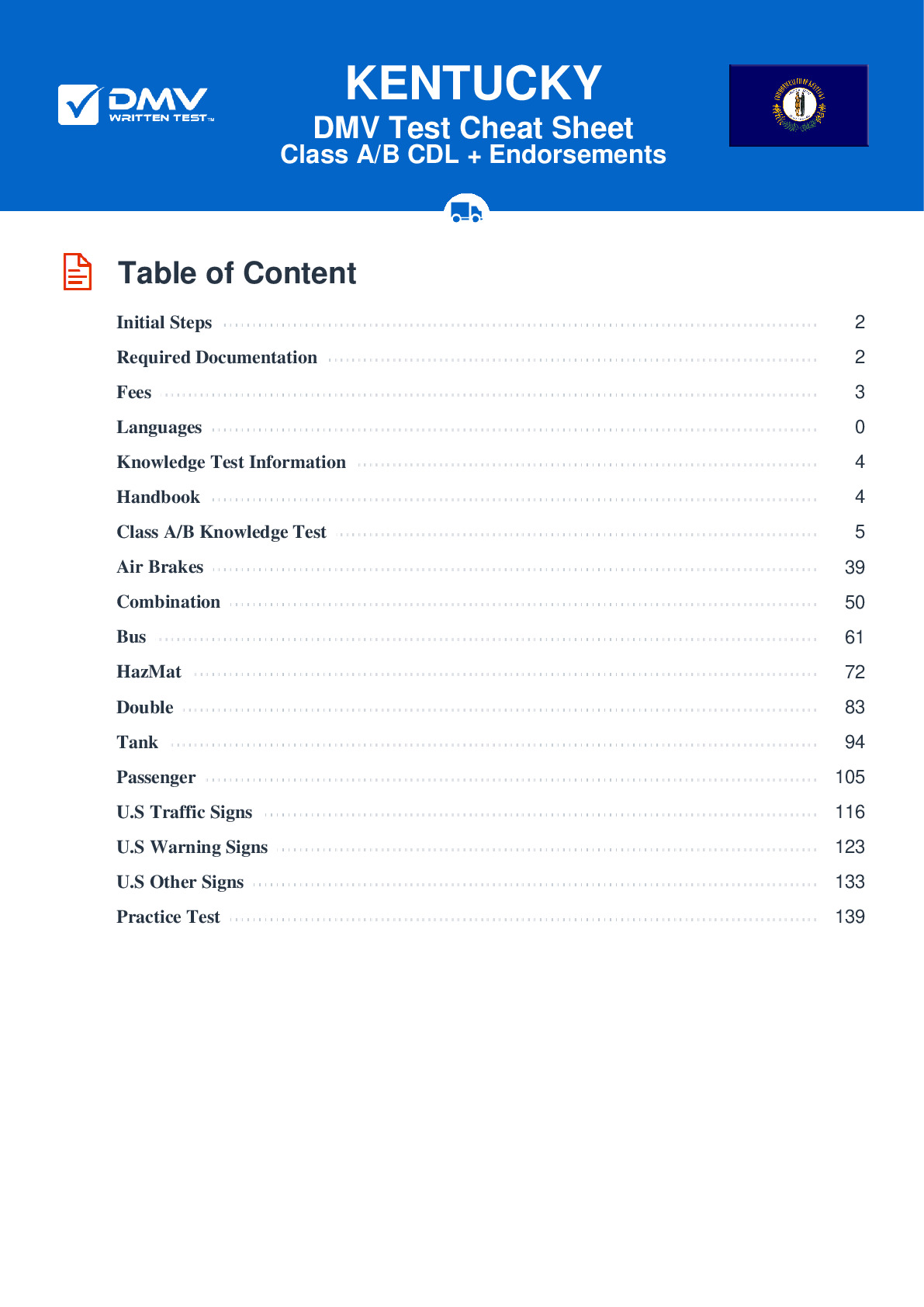Combination
All applicants who are applying for a Class A CDL should be prepared to take the Combination test. This test covers information found in Section 6 of the Commercial Driver License Manual. Section 6 provides the information needed to safely operate tractor-trailers, doubles, triples, and straight trucks with trailers. The test is made up of 20 multiple-choice questions, and applicants will need to correctly answer a minimum of 16 questions to pass. The Combination test is not a replacement for the Double/Triple endorsement test.
Number of Question
Passing Score
15. The emergency air line supplies air to the:
Explanation
The emergency air line (also known as the supply line) has two functions. The first is to supply air to the trailer air tanks, and the second is to control the emergency brakes on combination vehicles.
16. When testing ____, you should apply your vehicle's brakes with the hand control while moving the vehicle forward slowly.
Explanation
To test the trailer service brakes, you should first ensure that the braking system has a normal air pressure level, then release the parking brake. You should then move the vehicle forward slowly and apply the brakes with the hand control. If the trailer service brakes are working properly, you will feel the brakes activate.
17. The ____ trailer is the most likely to turn over if a driver takes a turn too quickly.
Explanation
When making a turn, be sure to steer gently and smoothly. Making a quick turn while pulling trailers is dangerous and can increase the risk of the last trailer rolling over.
18. When coupling, you should:
Explanation
When coupling air brake hoses, you should make sure the proper pairs of gland hands are connected. They are sometimes color-coded to help drivers avoid mistakes. Typically, blue is used for service lines and red is used for emergency lines.
19. When backing a trailer, you must first turn the steering wheel:
Explanation
When backing a vehicle without a trailer, a driver must turn the vehicle in the direction that they want to go. However, when backing with a trailer, the driver must begin by turning in the opposite direction. Once the trailer starts to turn, they should turn the wheel in the other direction to follow the trailer.
20. Combination vehicles:
Explanation




